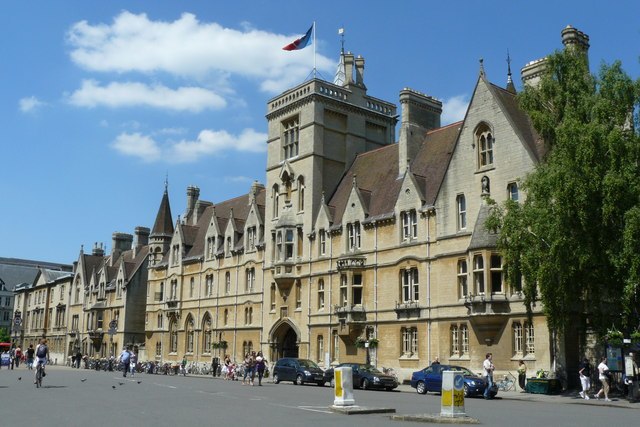The Bodleian Library is the main research library of the University of Oxford, and is one of the oldest libraries in Europe. It derives its name from its founder, Sir Thomas Bodley. With over 13 million printed items, it is the second-largest library in Britain after the British Library. Under the Legal Deposit Libraries Act 2003, it is one of six legal deposit libraries for works published in the United Kingdom, and under Irish law it is entitled to request a copy of each book published in the Republic of Ireland. Known to Oxford scholars as "Bodley" or "the Bod", it operates principally as a reference library and, in general, documents may not be removed from the reading rooms.
Doors to the Bodleian's main entrance, with the coats of arms of several Oxford colleges
The library in 1566, drawn by John Bereblock and given to Queen Elizabeth I as part of a book when she first visited Oxford.
Doorway to the Schola Moralis Philosophiae (School of Moral Philosophy) at the Bodleian Library (now the staff entrance in the Schools Quadrangle)
The Tower of the Five Orders, as viewed from the entrance to the Divinity School
The University of Oxford is a collegiate research university in Oxford, England. There is evidence of teaching as early as 1096, making it the oldest university in the English-speaking world and the world's second-oldest university in continuous operation. It grew rapidly from 1167, when Henry II banned English students from attending the University of Paris. After disputes between students and Oxford townsfolk in 1209, some academics fled north-east to Cambridge where they established what became the University of Cambridge. The two English ancient universities share many common features and are jointly referred to as Oxbridge.
Aerial view of Merton College's Mob Quad, the oldest quadrangle of the university, constructed between 1288 and 1378
Balliol College, one of the university's oldest constituent colleges
An engraving of Christ Church, Oxford, 1742
Lady Margaret Hall, founded in 1878








